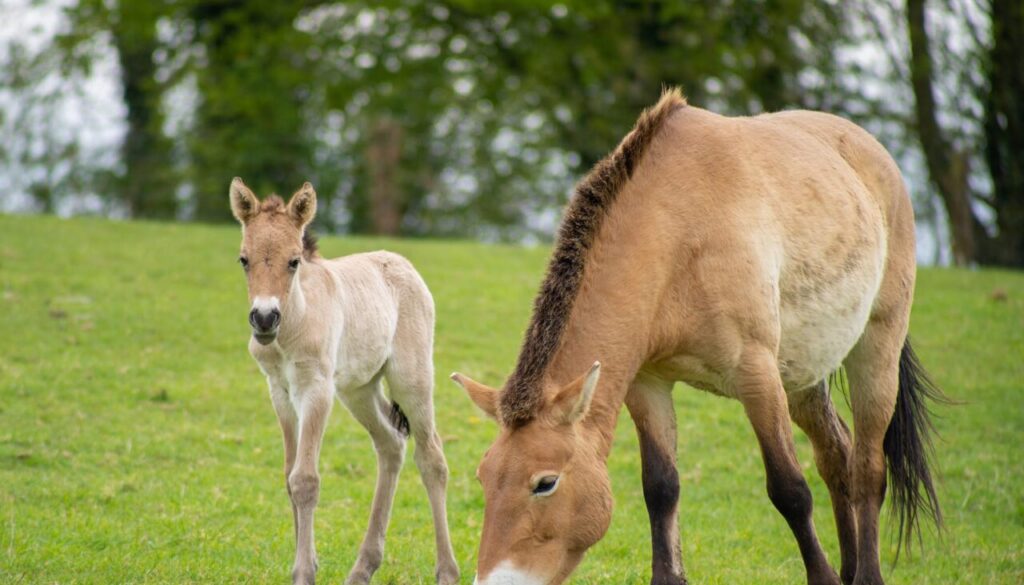NORTH HAMPSHIRE: Marwell Zoo welcomes a tiny new addition
Marwell is delighted to announce the birth of a rare Przewalski’s foal who will join our harem in the valley field…
These horses were extinct in the wild from 1969 until 2008, so the birth is exciting for the Endangered species.
The new arrival foal was born to mother, Tsetseg and father Nogger on Saturday 15 April and is reported to be doing well.
Katie Foulkes, Assistant animal keeper, Hoofstock, said: “Tsetseg is a very good mum and her foal has been seen feeding well.
“She is separating herself and the foal from the group slightly, which is perfectly normal, and shows that she is being very protective.”
The foal will go on to be an important part of the European Ex-Situ Breeding Programme.
The new foal can be seen alongside last year’s new arrival Basil, in the zoo’s valley field, which can be seen from the balcony of Café Graze.
Przewalski’s foals weigh between 25 and 30kg at birth. They can stand and walk within an hour of being born, and within a few weeks are able to start grazing.
Did you know?
All of the Przewalski’s horses alive today are descended from just 12 captive individuals after the population in the wild was declared extinct.
In the wild, Przewalski’s horses typically live in harems consisting of a group of females and one stallion. Foals will stay with the harem until they are 2-3 years old.
Males will then leave the harem and form bachelor groups consisting of other young males and unsuccessful older stallions.
When they are around five-years-old, males attempt to form their own harems, either taking over an already established harem, stealing individual females from a rival group or joining young females leaving their natal harem.
Przewalski’s horses are now listed as endangered on the International Union for the Conservation of Nature’s (IUCN) Red List of Threatened Species with populations increasing thanks to zoo breeding programmes.
Marwell Zoo was instrumental in returning these wonderful horses back to the wild where populations are now increasing.
In the mid 18th century wild Przewalski’s horses would have been found from the Russian Steppes east to Kazakhstan, Mongolia and northern China.

